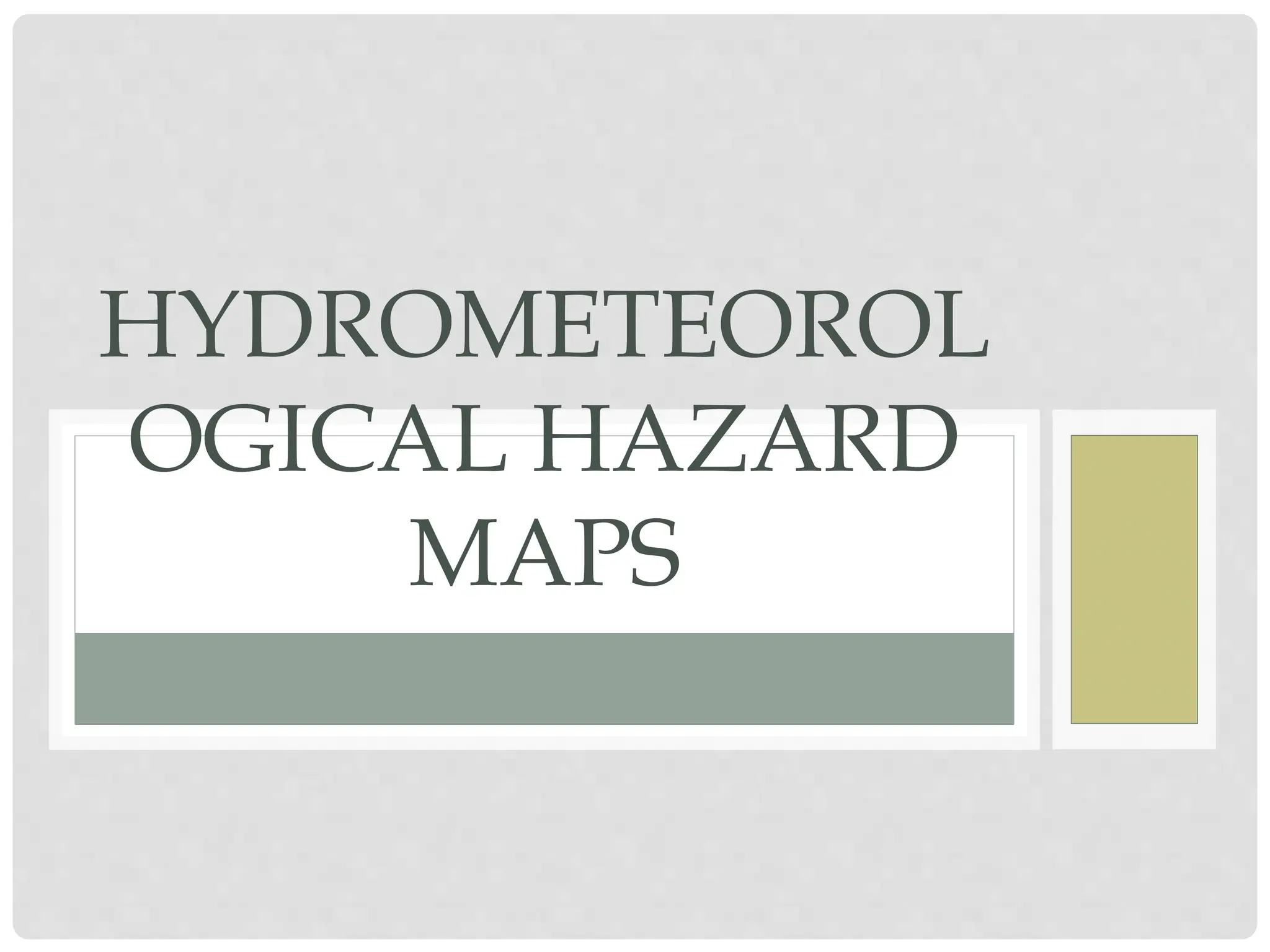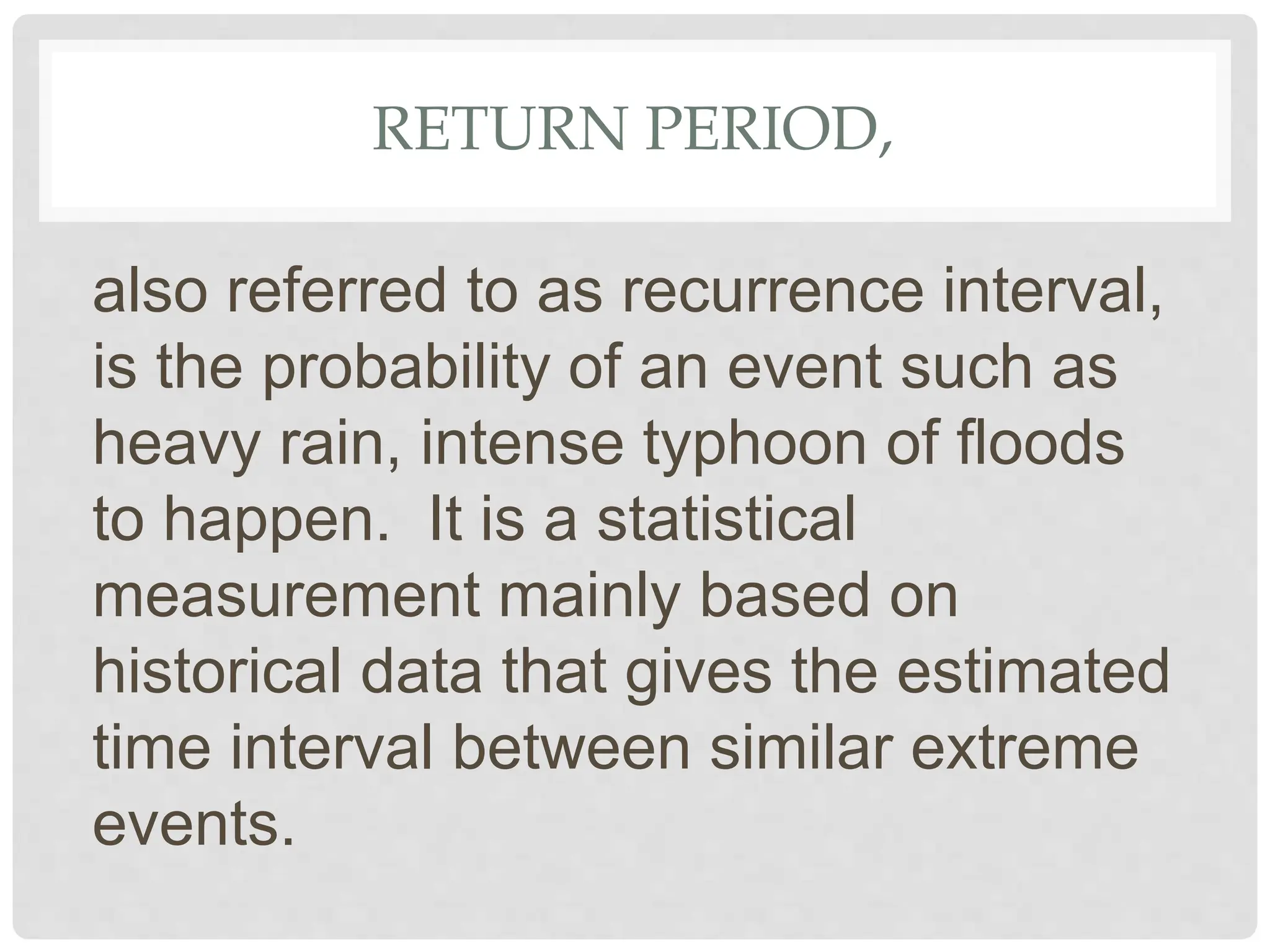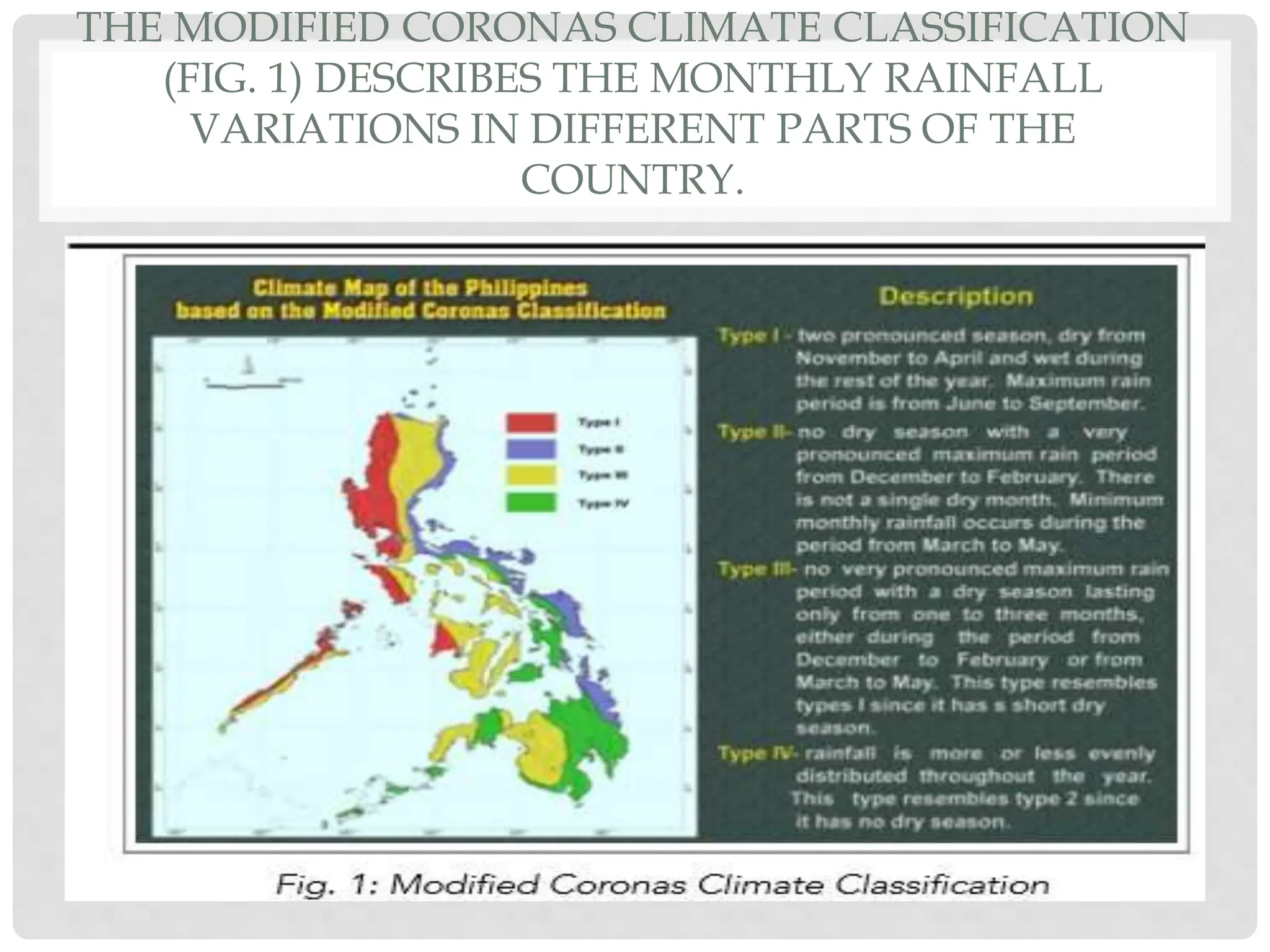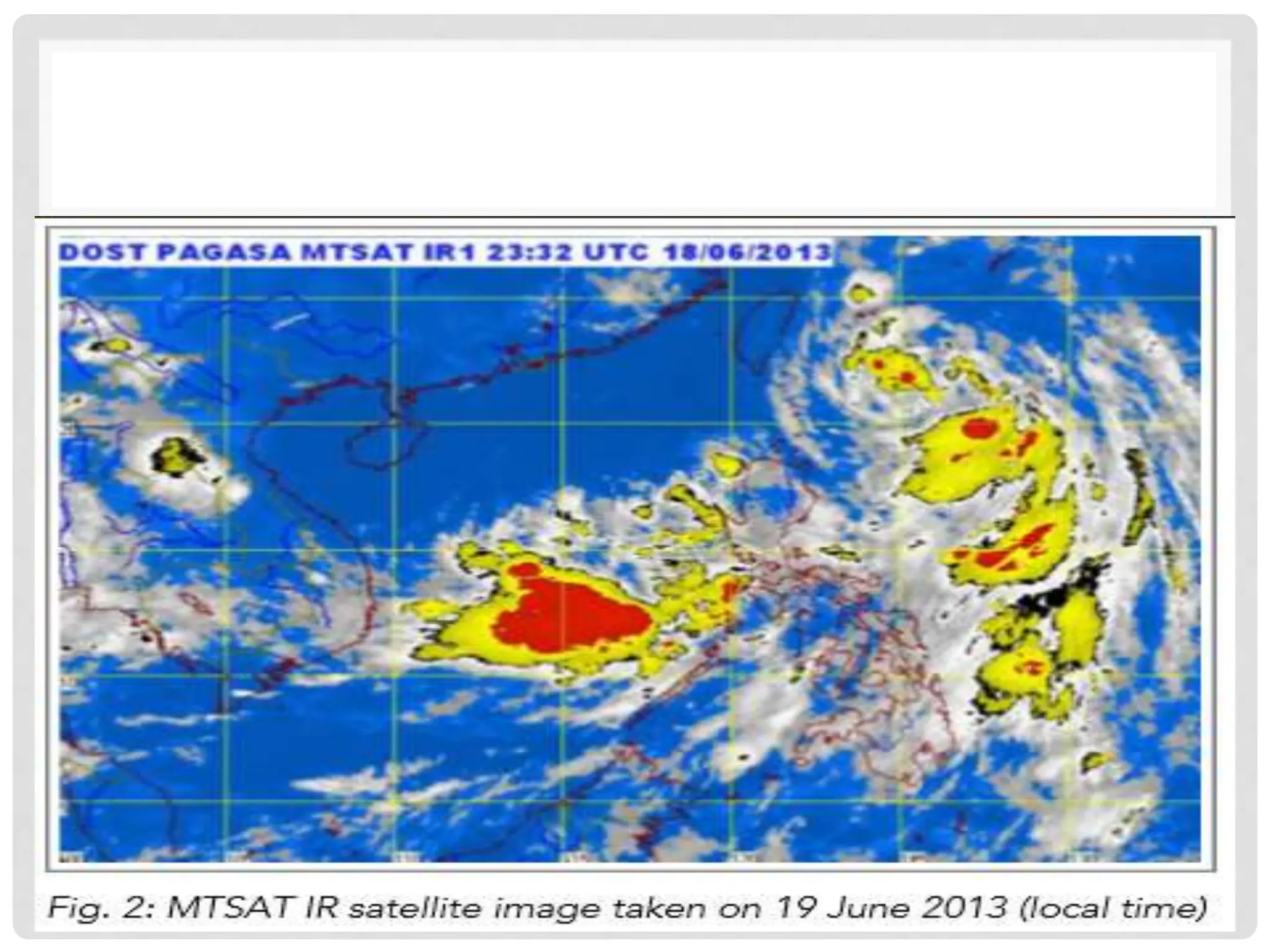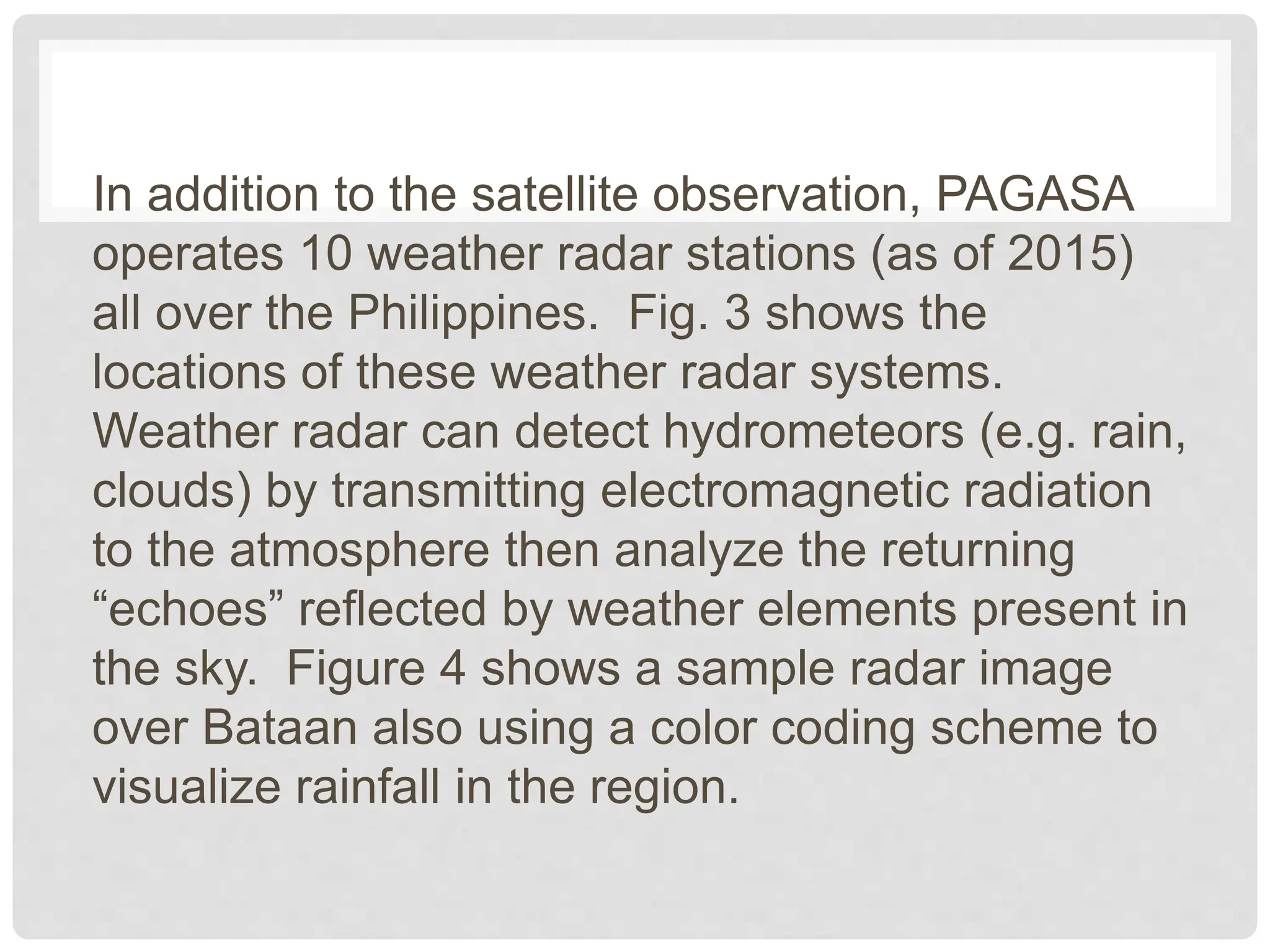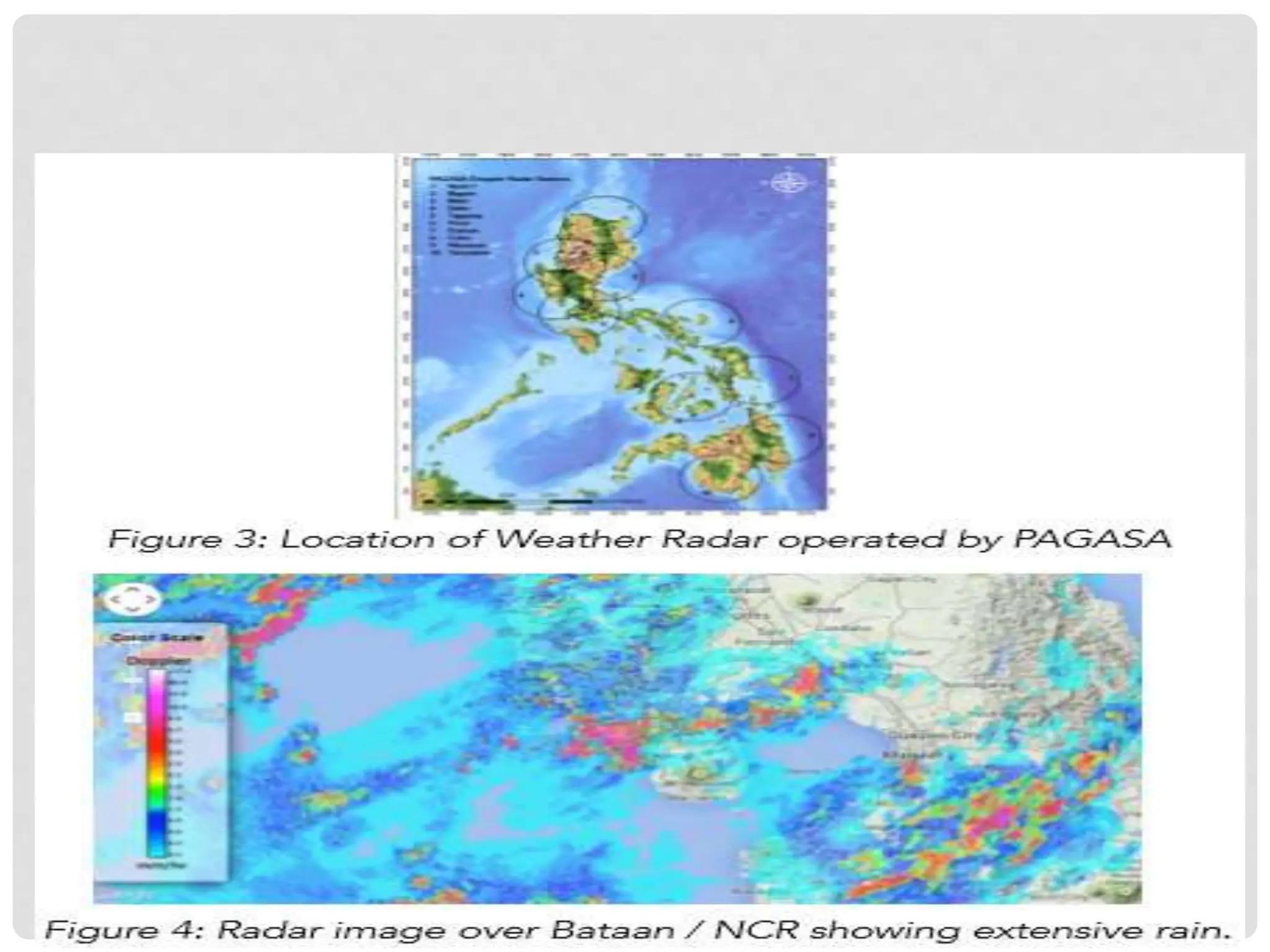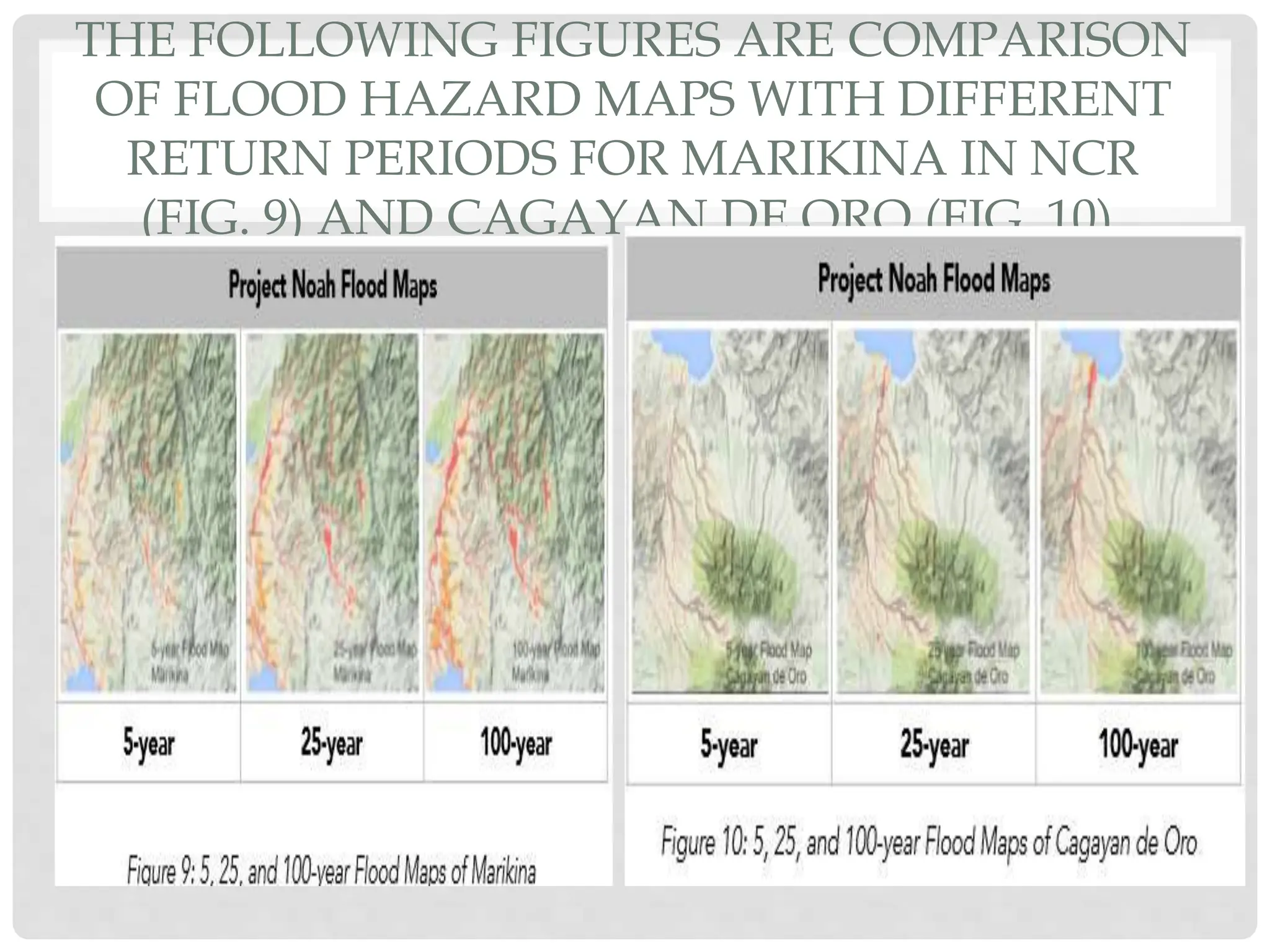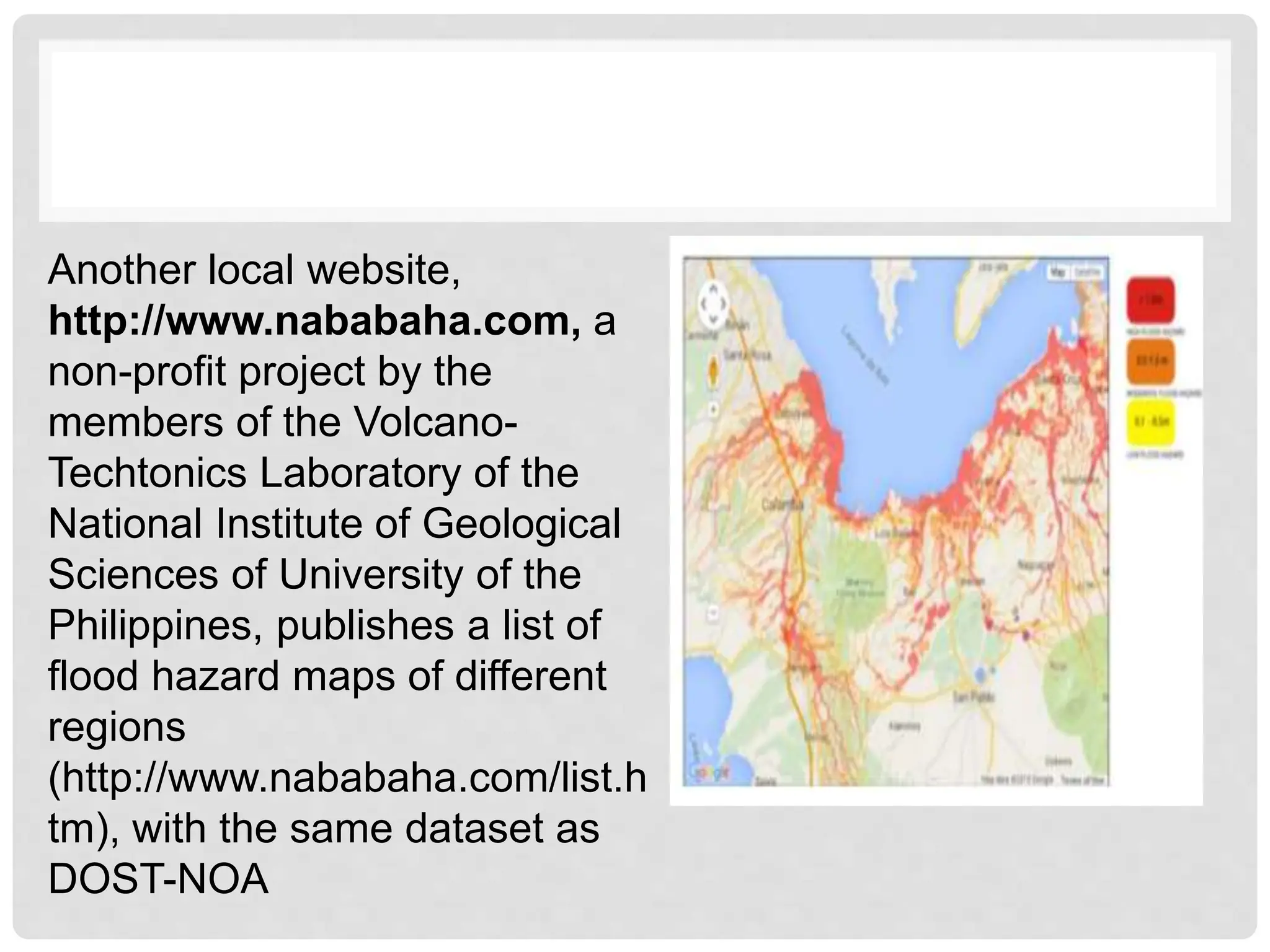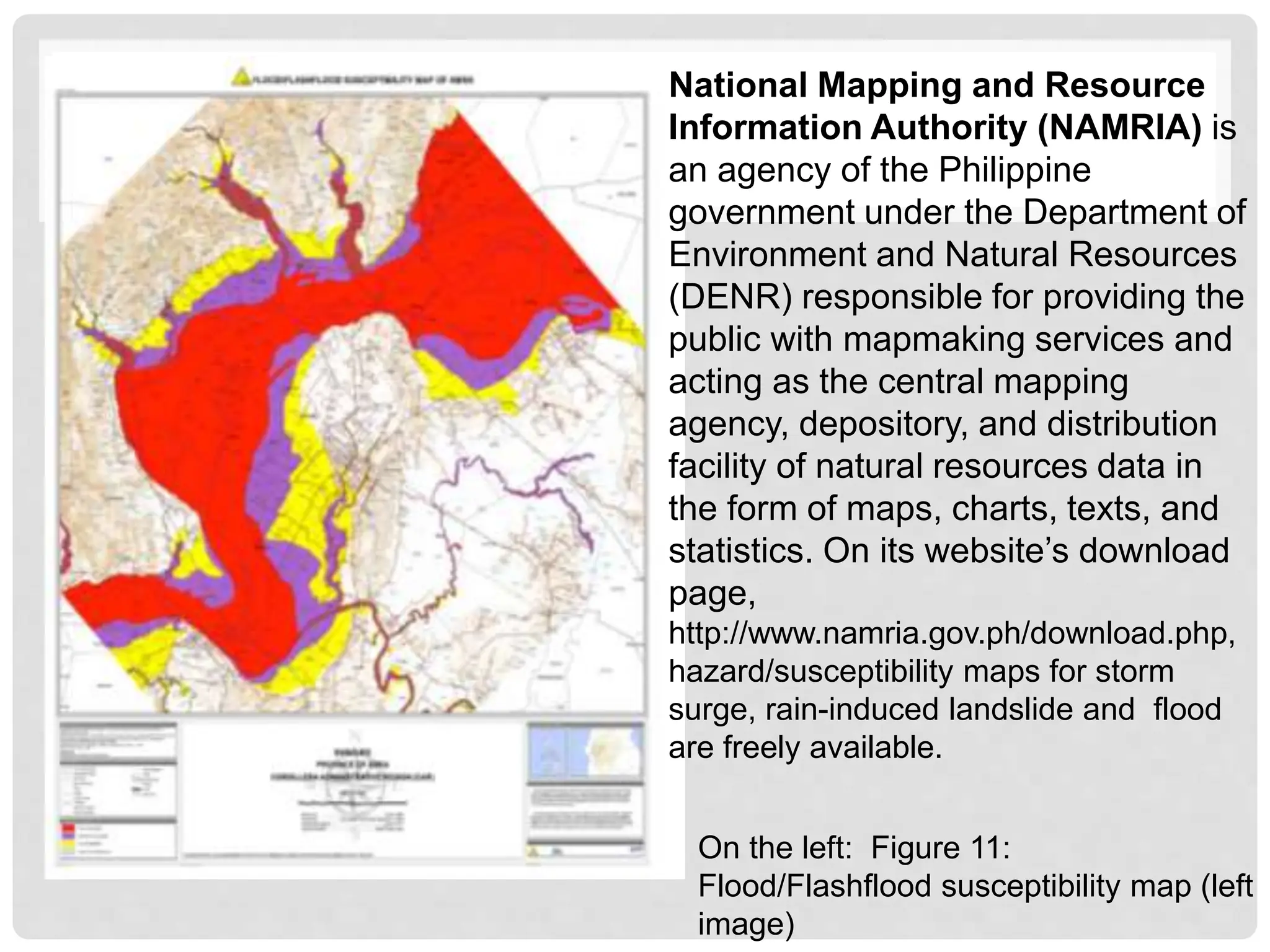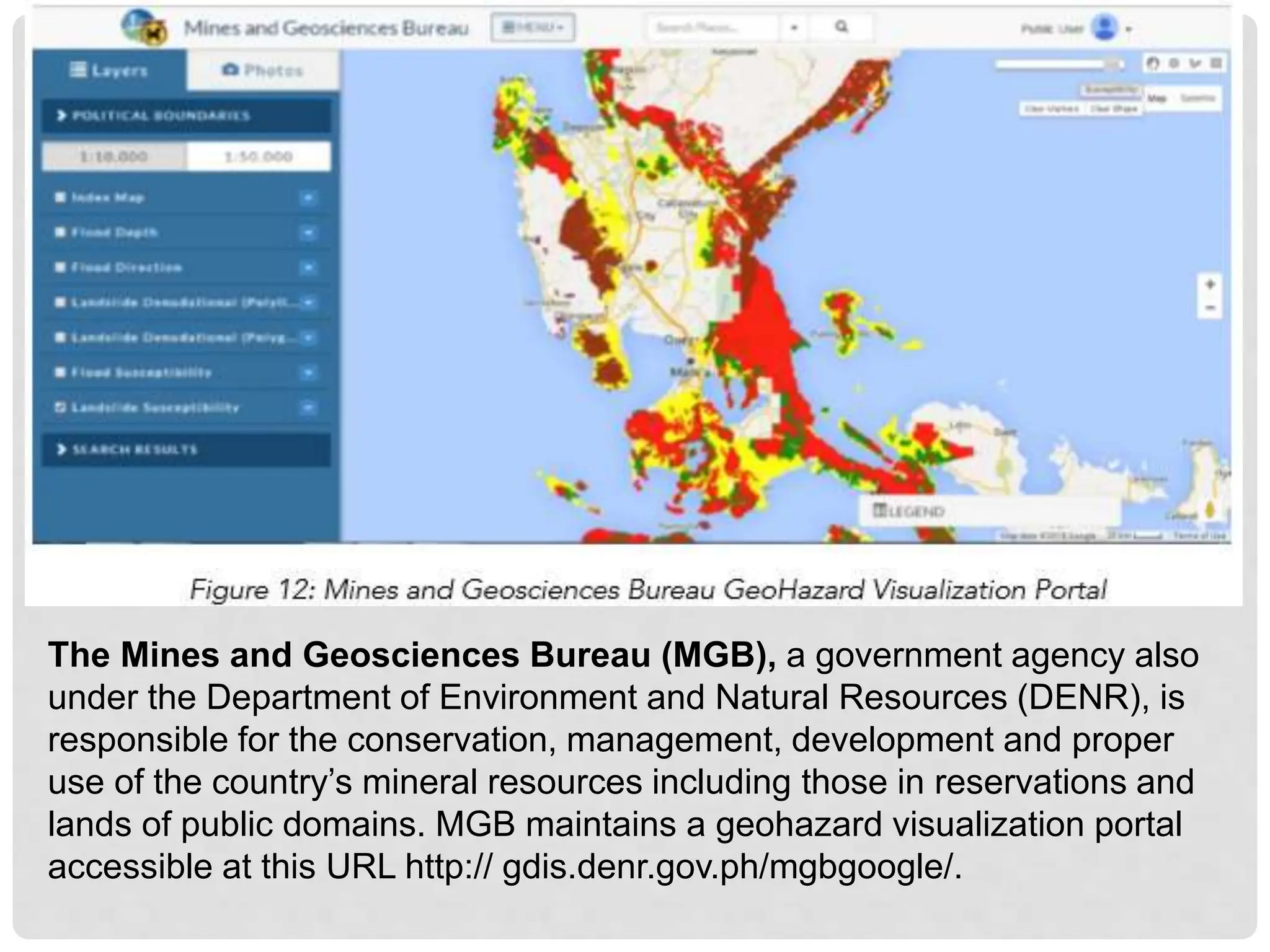Return period refers to the probability of extreme weather events like heavy rain or floods occurring, based on historical data. For example, a 100-year rainfall event has a 1% chance of happening in any given year, but two such events could occur in consecutive years. Various government agencies in the Philippines monitor rainfall and flooding risks. They produce hazard maps showing areas at risk of flooding for different return periods, using data from weather radars, satellites, and rainfall observations. These maps are publicly available online from sources like DOST-NOAH and NAMRIA to help with disaster prevention and mitigation efforts.
